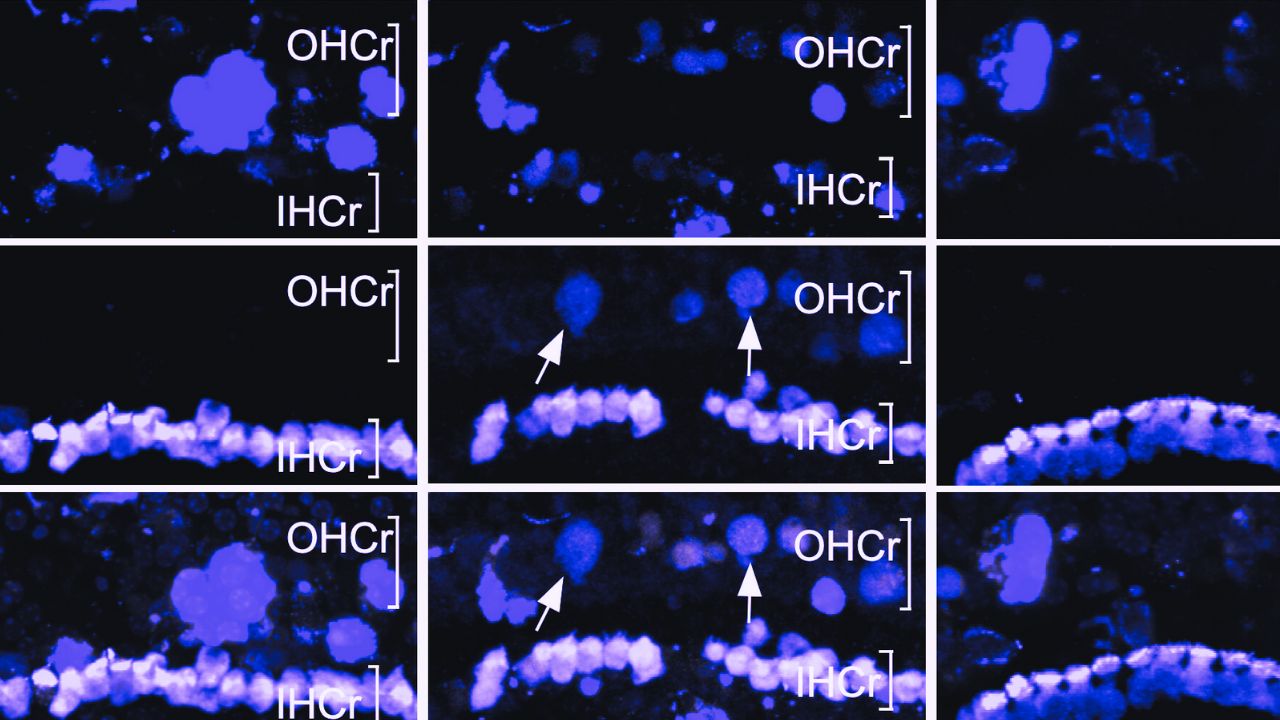BOSTON, MASSACHUSSETTS — Researchers at the Mass Eye and Ear have found a gene therapy approach that regenerates hair cells in the inner ear in mice, according to a report published in Proceedings of the National Academy of Sciences. Researchers used a drug-like cocktail of different molecules that helped regenerate hair cells in a mouse model by reprogramming genetic pathways within the inner ear. Zheng-Yi Chen, DPhil, an associate scientist in the Eaton-Peabody Laboratories at Mass Eye and Ear, led the research team.
This new finding is exciting because hair cells that are damaged or destroyed, resulting in hearing loss, cannot regenerate. This approach could one day lead to clinical trials for a gene therapy to treat hearing loss in humans. Hearing loss is a common condition that affects 48 million Americans and 430 million people globally.
“These findings are extremely exciting because throughout the history of the hearing loss field, the ability to regenerate hair cells in an inner ear has been the holy grail. We now have a drug-like cocktail that shows the feasibility of an approach that we can explore for future clinical applications.”
–Zheng-Yi Chen, DPhil
Ninety percent of individuals with hearing loss have sensorineural hearing loss, which is caused by the destruction of hair cells that relay sounds to the brain. Unlike other cells in the body, any remaining hair cells in the inner ear cannot divide and cannot convert themselves into new hair cells, rendering the hearing loss permanent. The ability to regenerate hair cells in the inner ear has been a long-standing goal in the hearing loss field.
Regenerating Inner Ear Hair Cells
Researchers discovered two molecular signaling pathways, Myc and Notch, that activate cell division required to regenerate new hair cells in mice in 2019. In humans, a drug therapy needs to be introduced to the inner ear to activate the Myc and Notch pathways. A chemical compound called valproic acid can activate Notch, but no molecule exists to activate Myc effectively.
Researchers discovered chemical compounds that can directly activate the downstream pathways that turn on and off when Myc is activated. They then used small biological molecules called small interfering RNAs to remove genes downstream that suppressed the activation of the Myc pathway.
The researchers combined the chemical compounds and siRNA molecules into a drug-like cocktail and delivered it to the inner ear of a normal adult mouse with damaged hair cells. They also delivered the gene Atoh1 by a gene therapy approach that utilizes a harmless adenovirus. This drug-like cocktail turned on Myc and Notch, which led to the regeneration of new hair cells. The researchers are conducting ongoing studies and refinements to this treatment approach in larger animal models, which are necessary before initiating clinical trials.
Last year, this research project was selected as one of the “Disruptive Dozen” gene and cell therapy technologies most likely to have a significant impact on health care over the next several years at the Mass General Brigham World Medical Innovation Forum. Mass General Brigham has launched its Gene and Cell Therapy Institute to help translate scientific discoveries made by researchers like Chen into first-in-human clinical trials and life-changing treatments for patients.
“My colleagues and I frequently are contacted by people with hearing loss who are desperate for effective treatments. If we can combine a surgical procedure with a refined gene therapy delivery method, we hope we can achieve our number one goal of bringing a new treatment into the clinic.”
–Zheng-Yi Chen, DPhil
Reference:
About Mass Eye and Ear
Massachusetts Eye and Ear, founded in 1824, is an international center for treatment and research and a teaching hospital of Harvard Medical School. A member of Mass General Brigham, Mass Eye and Ear specializes in ophthalmology (eye care) and otolaryngology–head and neck surgery (ear, nose and throat care). Mass Eye and Ear clinicians provide care ranging from the routine to the very complex. Also home to the world’s largest community of hearing and vision researchers, Mass Eye and Ear scientists are driven by a mission to discover the basic biology underlying conditions affecting the eyes, ears, nose, throat, head and neck and to develop new treatments and cures. In the 2022–2023 “Best Hospitals Survey,” U.S. News & World Report ranked Mass Eye and Ear #4 in the nation for eye care and #4 for ear, nose and throat care.
Source: Mass Eye & Ear, PNAS






